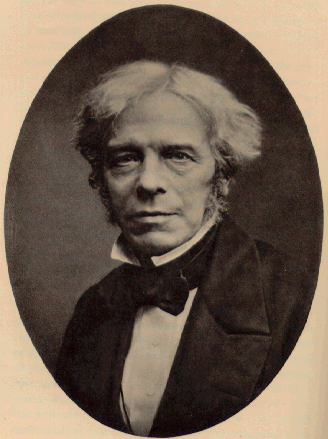Michael Faraday
(1791 - 1867)


"When the vapour of ether mixed with common air is inhaled it produces effects very similar to those occasioned by nitrous oxide...a stimulating effect is at first perceived at the epiglottis, but soon becomes very much diminished...By the imprudent administration of ether, a gentleman was thrown into a very lethargic state, which continued with occasional periods of intermission for more than 30 hours." Michael Faraday was a devout Christian, a Biblical literalist, and a lifelong member of the Sandemanians. The Sandemanians were a breakaway Presbyterian sect which held that Christ's world was exclusively spiritual. Faraday was also one of the greatest scientific experimentalists of all time.
The Quarterly Journal of Science and the Arts (1818)
The son of an impoverished blacksmith, Faraday was apprenticed as a bookbinder. He read every book he bound. After securing menial work at the Royal Institution, Faraday went on to discover electromagnetic induction, the battery and the dynamo. He did pioneering work in electrochemistry, isolated benzene and produced aluminium by electrolysis. He built the first electric motor, and later the first generator and transformer.
Faraday was introduced to nitrous oxide by his mentor Humphry Davy, ex-Superintendant of Thomas Beddoes' Pneumatic Institution. Faraday recognised that the inhalation of either nitrous oxide gas or ether vapour, despite their obvious differences, exerted functionally very similar effects on consciousness. Alas their potential as surgical anaesthetics eluded him. The epoch-making breakthroughs would come in America.
HOME
Search
Resources
Snapshots
Utopian Surgery
Michael Faraday
Refs and Further Reading
Anaesthesia and Anaesthetics